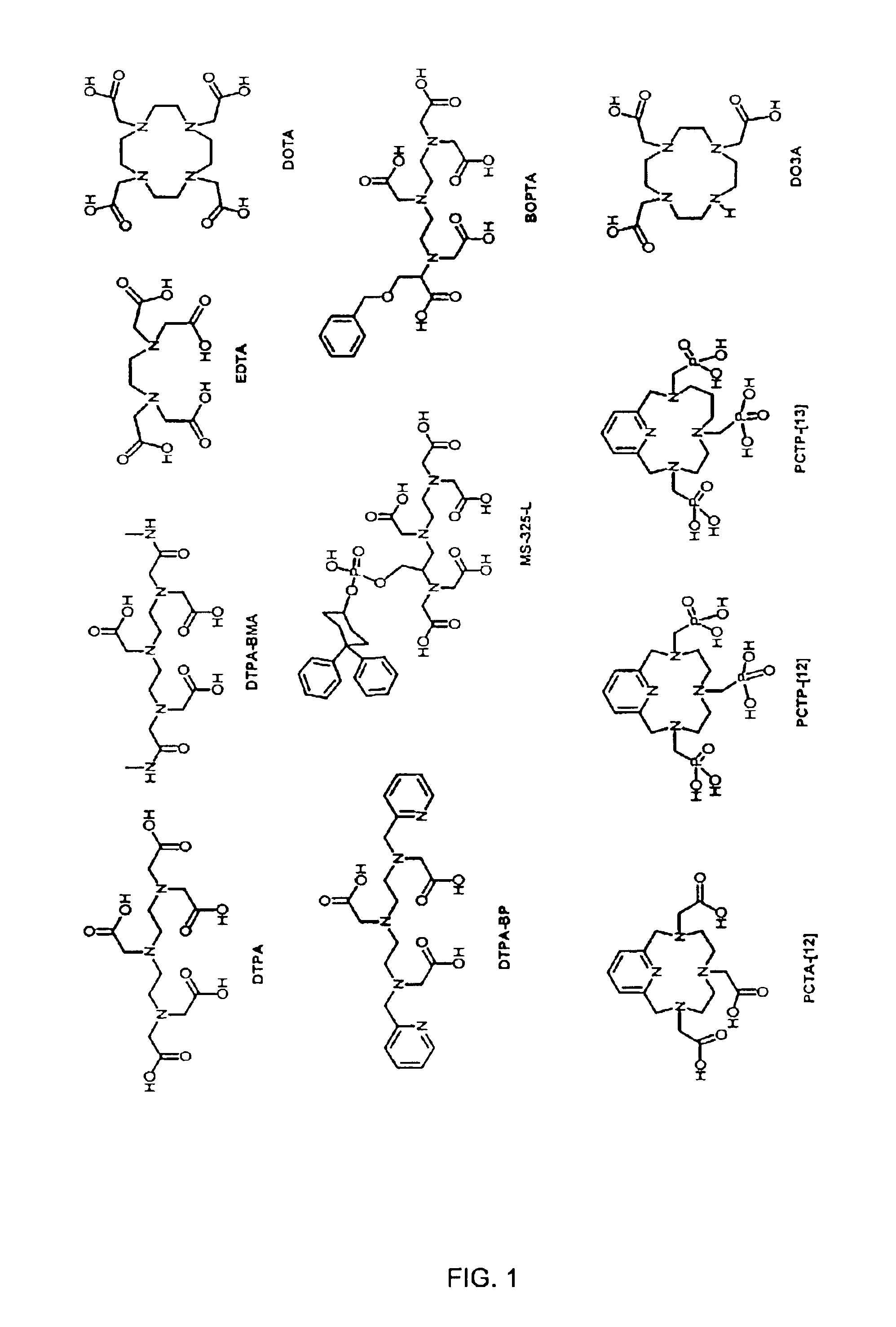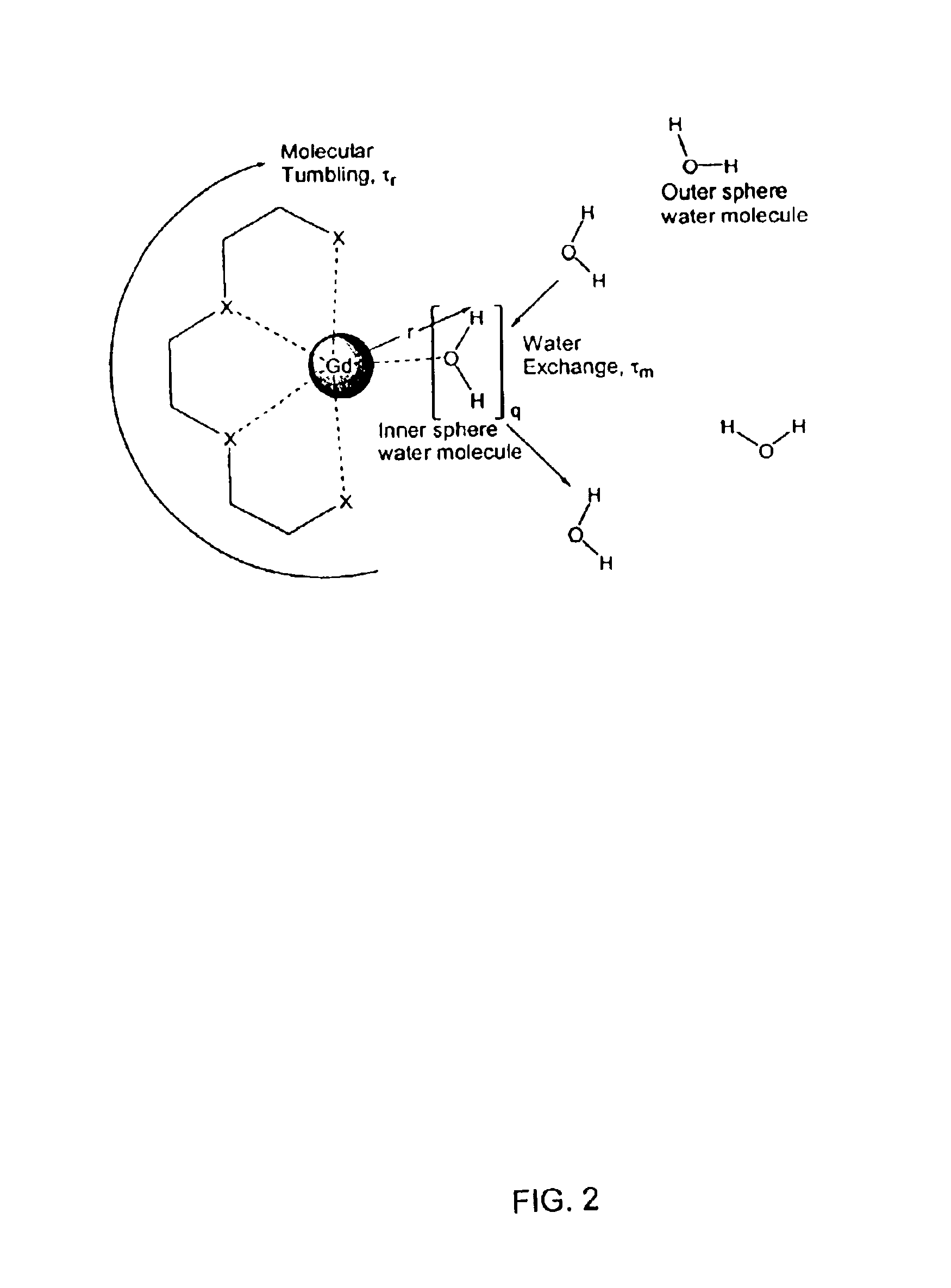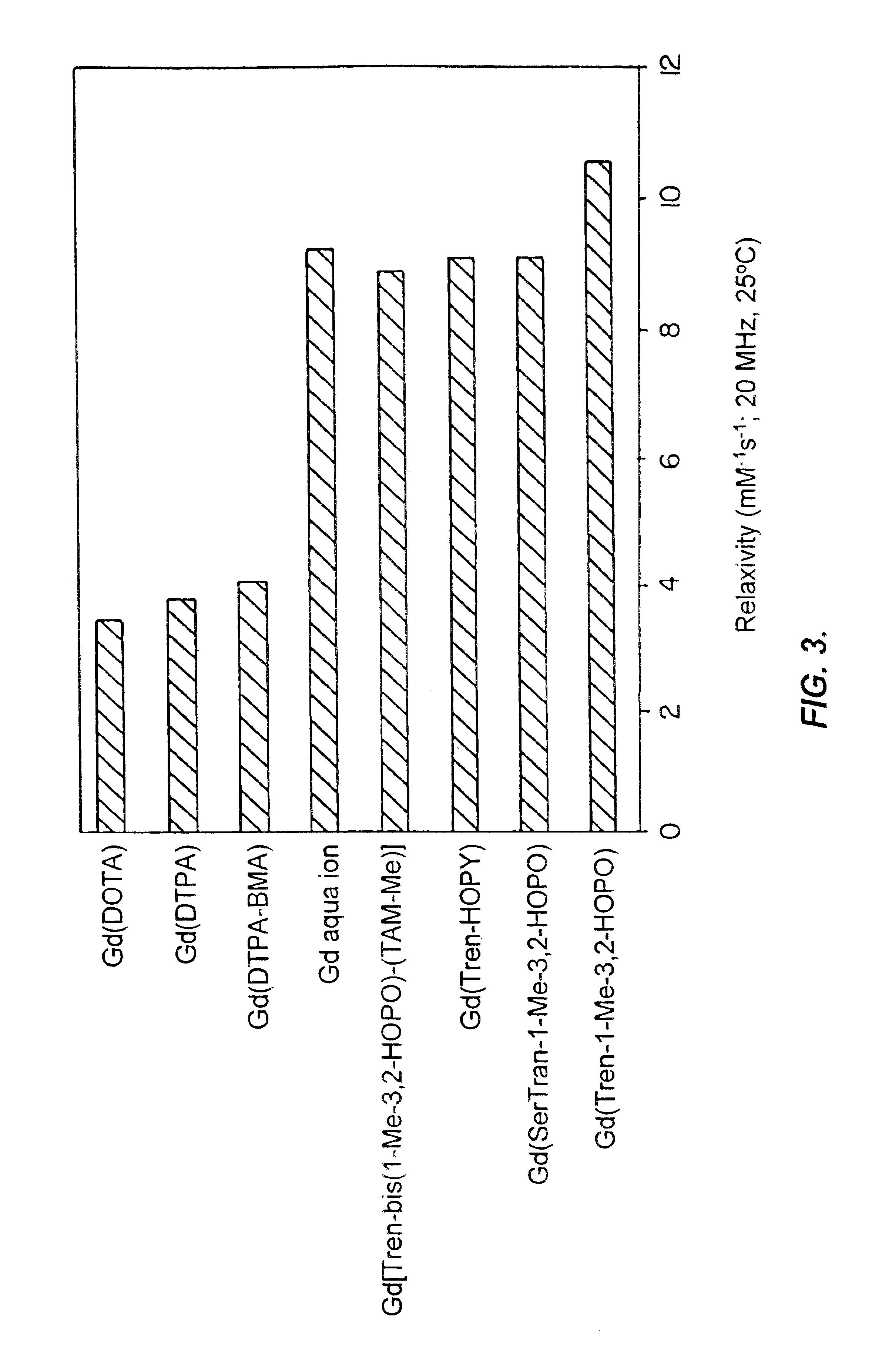Hydroxypyridonate and hydroxypyrimidinone chelating agents
a technology which is applied in the field of hydroxypyridonate and hydroxypyrimidinone chelating agents, can solve the problems of limited targeting of present contrast agents, general insufficient solubility of gd(iii) complexes, and less than ideal as mri contrast enhancing pharmaceuticals, and achieves greater specificity.
- Summary
- Abstract
- Description
- Claims
- Application Information
AI Technical Summary
Benefits of technology
Problems solved by technology
Method used
Image
Examples
example 1
Preparation of 6-methyl-3-hydroxy-2(1H)-pyridinone-4-carboxylic acid ethyl ester (Formula 8 in Scheme 2)
6-methyl-3-hydroxy-2(1H)-pyridinone 4-carboxylic acid ethyl ester-is a known material; however the previous preparation results in an impure product of low yield. Therefore, an improved procedure has been developed, which is higher yielding and can be scaled up to give large quantities of the product in high purity. The details are described as follows:
Sodium diethyloxylacetate (42.1 g, 200 mmol) was dissolved in THF (500 ml) and then placed into a 1-liter 3-neck round bottom flask. Chloroacetone (16 ml, 200 mmol) was added to the mixture. After waiting 10 minutes, NH3 gas was bubbled through the reaction and AlCl3 (2.67 g, 20 mmols) was slowly and carefully added. The reaction was stirred under ambient conditions for 5 days. The resulting orange solid was filtered, and taken up in 1 M HCl (500 ml) so that the pH<3. The resulting suspension was stirred for 30 min and the prec...
example 2
Preparation of 3-benzyloxy-4-carboxy-6-methyl-2(1H)-pyridinone (Formula 11 in Scheme 2)
6-methyl-3-hydroxy-2(1H)-pyridinone-4-carboxylic acid ethyl ester (11.8 g, 60 mmol) and K2CO3 (9.06 g, 65 mmol) were dissolved in H2O (650 ml) with aid of ultra-sonication. This solution was added to a solution of benzyl bromide (7.8 mL, 65 mmol) in CH2Cl2 (500 ml) in a 2-liter 3-neck round bottom flask. Cetylpyridinium chloride (9.09 g, 30 mmol) was added as the phase transfer catalyst for this reaction. The solution was stirred with an overhead stirrer, at 40° C. for 1 day until the reaction was judged to be complete by TLC. The two layers were separated, and the aqueous layer was extracted twice with CH2Cl2 (100 ml). The organic layers were combined and the solvents were removed. Purification, of this crude product (3-benzyloxy-6-methyl-2(1H)-pyridinone-4-carboxylic acid ethyl ester (9) was possible by column chromatography, although it was found to be more convenient to use the crude product d...
example 3
Preparation of 3-benzyloxy-6-methyl-4-(2-thioxo-thiazolidine-3-carbonyl)-2(1H)-pyridinone (Formula 12 in Scheme 2)
3-benzyloxy-4-carboxy-6-methyl-2(1H)-pyridinone (5.39 g, 21.1 mmol) was dissolved in dry THF (200 ml). Then 2-mercaptothiazoline (2.71 g, 23.2 mmol) and DMAP (0.25 g, 2.0 mmol) were added and the solution stirred under an atmosphere of N2 for 1 h. Then dicyclohexylcarbodiimide (DCC, 5.12 g, 25.3 mmol) was added in small portions at intervals split over 3 hrs. The reaction was left to stir for 16h, and then left to stand at 0° C. for a further 24 h. The dicyclohexylurea (DCU) was removed by filtration, and the solvents removed. The remaining residue was dissolved in CH2Cl2, filtered and purified by a gradient flash silica column (2-6% CH3OH in CH2Cl2). The solvents were removed from the appropriate fractions by rotary evaporation, and the residue recrystallized from acetone, yielding yellow crystals (3.78 g, 56%). 1H NMR (CDCl3, 300 MHz): δ=7.32-7.47 (m, 5H, aromatic Bn),...
PUM
| Property | Measurement | Unit |
|---|---|---|
| pH | aaaaa | aaaaa |
| solubility | aaaaa | aaaaa |
| structure | aaaaa | aaaaa |
Abstract
Description
Claims
Application Information
 Login to View More
Login to View More - R&D
- Intellectual Property
- Life Sciences
- Materials
- Tech Scout
- Unparalleled Data Quality
- Higher Quality Content
- 60% Fewer Hallucinations
Browse by: Latest US Patents, China's latest patents, Technical Efficacy Thesaurus, Application Domain, Technology Topic, Popular Technical Reports.
© 2025 PatSnap. All rights reserved.Legal|Privacy policy|Modern Slavery Act Transparency Statement|Sitemap|About US| Contact US: help@patsnap.com



